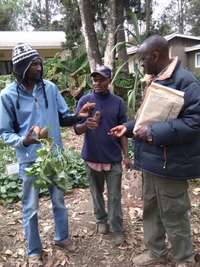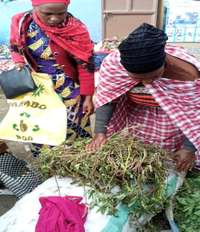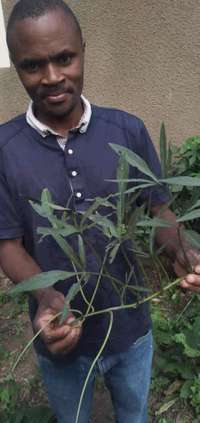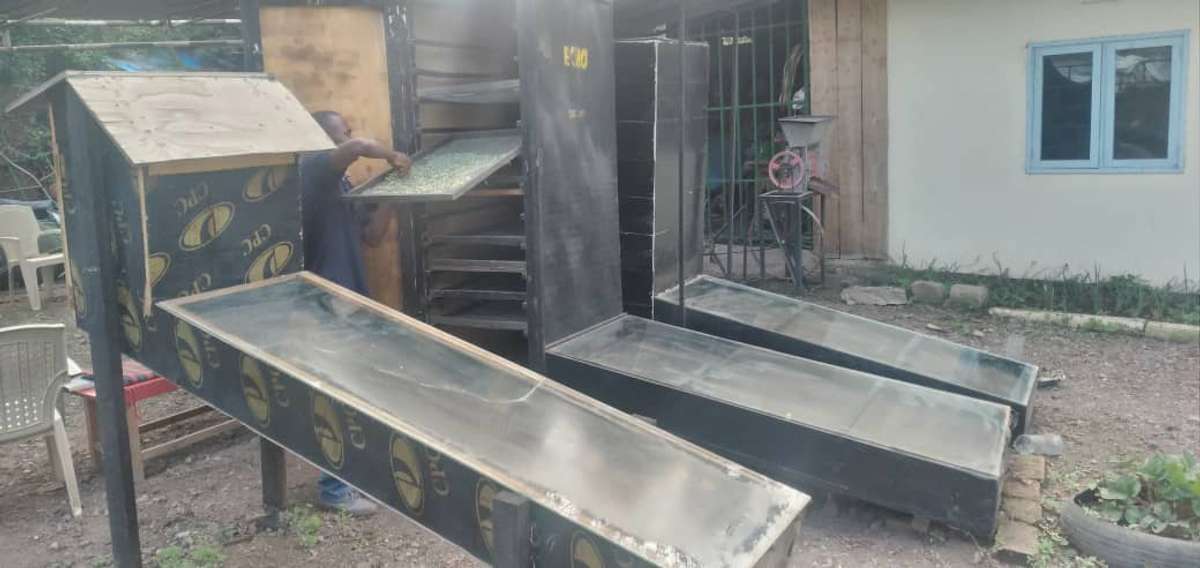
Figure 6. Orange flesh sweet potato. Source: ECHO East Africa Staff
According to Brockman (2010) sweet potatoes (Ipomoea batatas) are indeed sweet, but they are not potatoes. Neither are they true yams. Rather they are the member of the Convolvulus, or morning glory family. In the United States, ‘yams’ are actually sweet potatoes varieties with moist texture and orange flesh (Figure 6).
Some reports shows that sweet potatoes are already the 6th or 7th most produced food crop in the world, surpassed only by wheat, rice, corn, potato, barley, and cassava. Among the reasons that sweet potato is a great crop is that it is relatively easy to grow, relatively free of pests and diseases, has relatively high productivity, and is always good food, principally starch, some protein and vitamin C, and, in orange varieties, rich in vitamin A. In addition, the young leaves, rich in protein and most vitamins, are also good food. Furthermore, the sweet potato is an excellent animal food. Its ability to produce in poor soils makes the sweet potato an especially good crop for poor tropical soils where fertilizer is not available.

Figure 7. Sweet potatos at market. Source: ECHO East Africa Staff
Currently sweet potatoes have employed many women in the marketing chain as they sell both tubers and leaves, as the leaves are also used as food (Figure 7).
Preparation options
In East Africa they term sweet potatoes ‘viazi vitamu’, which is boiled and eatten during breakfast to replace wheat bread for most of the households. Leaves and stems are boiled for 15-20 minutes, washed, seasoned, and served during other meals. The sweet potato can then be served as is, mashed, or combined in many dishes (casseroles). The mashed pulp can be used as a partial substitute for wheat flour in baked products such as pancakes, cakes, flat breads, cookies, fritters, or even bread.

Figure 8. Sweet potato stems and leaves. Source: ECHO East Africa Staff
For baked sweet potato, the entire sweet potato is wrapped and then baked in a modern or primitive oven until soft (one hour at 350°C). During baking of most sweet potatoes, part of the starch is converted to the reducing sugar, maltose, thus increasing sweetness. For osmotically modified boiled sweet potato, the peeled and trimmed sweet potatoes can be cut into thin (1/8”) slices, placed in water for two hours (moved once in a while) and then boiled. The products will be clearer, less sweet, and milder than those made from untreated sweet potatoes. (What is happening chemically is that the enzymes and substrates responsible for polyphenolic oxidation are partially lost, as well as some of the sugars).
The flour of sweet potato is much more difficult to make than that of potato because the reducing sugars readily released from the starch combine with free amino acids to produce disagreeable colors, odors, and flavors. To avoid this the peeled sweet potato can be shredded, and the shreds immersed in water for two hours. This process works better if the water is changed 2-3 times. The shreds are drained and then dried, first in the shade (with air movement or wind) and later in the sun (in some cases, drying over the stove or in an oven will be necessary). The brittle shreds are easily crushed to flour, or this can be done rapidly in a household blender. The flour can be stored for six months or more in sealed containers. It can be used as a substitute for wheat flour in the following amounts: 100% in white sauces, 25-50% in cookies, cakes and flat breads, and 15-20% in breads. From the water, starch can be recovered.
To obtain the starch, the peeled sweet potato is ground in a mill or blender as finely as possible, and mixed with 5-10 times its weight in water. The starch settles out, and the water is carefully poured away (can be used as pig feed). The starch is then mixed with water 1-3 times more and the process is repeated. After the last settling the water is carefully drained and the starch is dried on a metal surface in the sun. It can be used, as is any starch, such as corn or potato starch, and can be stored in sealed containers for a year or more.
A breakfast food similar to “cereal” can be made from any sweet potato. The sweet potato is grated (not as finely ground as for starch), suspended in water, and filtered through a cloth. The liquid is saved for starch, the residue is suspended 1-3 times more in water, and filtering is repeated. The portion of the sweet potato that does not pass through the filter is then dried and lightly toasted on a hot plate (over the fire). The toasting is very delicate. The product must be stirred and turned almost continuously, and should not become sticky and jellified. The toasted product can be stored in sealed containers and eaten with milk without further cooking, or can be used much like starch or flour, imparting its characteristic flavor.
Cultivation

Figure 9. Adive deomsntrates the sweet potato vine cutting for which four nodes are enough to plant. Source: Erwin Kinsey
Sweet potatoes are one of the easiest crops to grow, but because they’re underground, it can be a little tricky to know when and how to harvest them and then store them properly.
Good yields of sweet potato require vigorous vegetative planting materials (Figure 9). If poor materials are used, growth will be delayed and yield will invariably be reduced. Poor materials will negate all other efforts to provide optimum conditions for growth. For practical purposes in the tropics sweet potatoes are produced from cuttings of existing vines. In the Temperate Zone it is necessary to conserve storage roots during the winter and stimulate them to grow in the spring as a source of sprouts for planting. This technique requires very careful management of the stored roots, including controlled temperatures. Therefore, it cannot be recommended for the tropics.
Cuttings for new plantings can be taken from existing plantings 2-3 months of age. Cuttings should not be taken from older plantings in order not to reduce yield. Up to five cuttings can be taken per plant. However, at the time of harvest it may be possible to obtain some good cuttings just before the old vines are cut away for the harvest of roots. In areas where sweet potatoes are not grown year round, special plantings will have to be made as sources of cuttings. It may be possible to obtain as many as 30 cuttings per plant. The actual ratio of size of cutting bed to size of planting should be from 1:10 to 1:40. Cuttings should be 12-18 inches long. Shorter cuttings can be used if the distance between nodes is not excessive. The vines should be vigorous but not too soft and succulent (Figure 9). Two, three, or more cuttings can be taken from most vines but old thickened, diseased, and leafless cuttings should be avoided. Some growers remove leaves from cuttings before planting while others do not remove any leaves before planting cuttings. Cuttings should be gathered together in convenient sized bundles, tied, or wrapped in burlap.
Bundles should be held 1-3 days in a shady protected area and maintained moist. This will stimulate root production, and even though the initial roots may be broken on transplanting, the cutting will be more prepared to establish itself if allowed to pre-root as described. If weevils are a problem, cuttings can be immersed five minutes in a drum containing 0.1% carbofuran. Use gloves. Plant within 24 hours. This treatment eliminates weevils within the cuttings.
Planting can be done by hand or with an animal or machine-drawn planter. Usually best results are obtained by planting cuttings at an angle with about 2/3 of the cutting below the soil. If a pre-emergence herbicide has not been used, it can be applied after planting, followed by a light irrigation to remove it from the leaves and to carry it into the soil.

Figure 10. Students harvesting sweet potatoes. Source: ECHO East Africa Staff
Depending upon variety, sweet potatoes may be ready for harvest after ten weeks or may require up to nine months in the field. The majority of the varieties can be harvested after five months in the field (Figure 10). Cool conditions such as found in tropical highlands can extend the needed growth period of normal varieties to 8-9 months. Early-maturing varieties are in the process of development. Sweet potatoes from an individual planting may be harvested as needed over a three to four month harvest season.

Figure 11. Three alternative food driers at ECHO East Africa. Source: ECHO East Africa Staff
After harvesting the sweet potatoes should be stored for 4-6 days at 27-29°C to cure those which might have undergone abrasion during harvesting and increase sugar content. During storage the sweet potatoes should not be stored in the refrigerator because the freezing point of the refrigerator is 1-4°C which will damage the sweet potatoes. It is important to process sweet potatoes to increase their value, quality and use sweet potatoes and processed to obtain dried sweet potatoes and flour. The drying of sweet potatoes in general requires or uses solar energy where the farmer must follow principles for drying crops. At the moment ECHO East Africa is promoting improved driers (Figure 11) which are affordable at household level.

Figure 11. Three alternative food driers at ECHO East Africa. Source: ECHO East Africa Staff
Sweet potato processing
Different methods of sweet potatoes processing include natural (known locally as michembe and matoborwa) and improved methods.
Normally drying reduces the water in the sweet potato crops which, if present helps the growth of pathogens and causes rotting. Drying reduces the water content significantly and enables long-term storage.Drying will depend on the humidity in the air and works best if the humidity in the air is low.Sweet potatoes contain enzymes that cause loss of color, nutrients and flavor during drying, so it is recommended to prevent this situation by boiling a little before drying.
Natural Storage
Some basic steps in the curing and storing of sweet potatoes (michembe) include:
- Potatoes are dried in the sun for 1-2 days to reduce excess water, to facilitate peeling and cutting into thin pieces.
- After the potatoes dry, they are peeled with a knife. All parts damaged during harvesting or attacked by the fungus are removed
- Potatoes are cut into small pieces to facilitate drying. Due to the use of a knife in cutting, the pieces of potatoes are not aligned so they do not dry together
- The pieces are dried in the sun for three 3-4 days. The pieces must be completely dry to prevent damage during storage. Also, care during drying/steaming is important to avoid sand, dust and other impurities.
Some basic steps in the curing and storing of sweet potatoes (matoborwa) include:
- Potatoes are dried in the sun for 1-2 days to reduce the sap and improve the taste
- Potatoes are cleaned with clean water and then the bad parts are removed
- Cleaned potatoes are boiled in large containers such as pots for 30-40 minutes
- Boiled potatoes are eaten with the hands as the skin of the potato softens and hence can be squeezes easily
- Boiled potatoes are cut into thin slices to make drying easier. Dry the potatoes until they reach nine percent moisture and let them cool, then wrap them in a plastic bags and store them in a cool and dry place
- The cut pieces are dried in containers so that they don’t get dirty, in sun drying, the pieces dry after 3-4 days. All of these steps, if done well, can be stored for six months, in a strong warehouse with good ventilation. Bins or bins can be used in storage instead of sacks. Do not add fresh potatoes on top of those that have started to dry out in the dryer.
Improved Storage
These methods are more efficient as they focus on reducing loss of quality, better cleanliness, quick drying, and fasten entry into markets.
Cutting sweet potatoes during preparation has been found to be a difficult task, so a hand machine is used to simplify the work and makes the farmer have time to do other activities, by using processing machines, and also hand machine for peeling sweet potatoes and follow the following steps:
- Harvest mature potatoes, let them dry for 1-2 days
- Peel, wash and chop into small pieces using a machine
- Spread your pieces in a clean area eg black plastic or mosquito netting then leave in the sun to dry (don’t dry on the floor as it will mix with the soil). Drying time should not exceed three days
- Nutritional potatoes hung in a container
- When they dry, you can save them for later use or grind them in a machine to get flour for various snacks and other uses
Other interesting facts about Sweet Potato
- Beta-carotene tends to decrease when potatoes are processed for a long time at high heat, do not boil for a long time or do not use steam for a long time or roast and dry for a long time
- Leaving sweet potatoes skins on retains the beta-carotene vitamin
- Do not store nutritious potatoes for a long time, Vitamin A (beta-carotene) decreases with long-term storage.
- Sweet potatoes that are stored for more than one month tend to lose beta carotene, so they should be stored in a dry place and in equipment that does not pass the sun.
- Sweet potatoes can be mixed with other crops or the flour of other crops (such as corn, soybeans and vegetables such as spinach) in order to obtain a mixture of flour for the use of porridge. When you drink a cup of porridge with 30% nutritious potatoes, you provide your child with 20% of the vitamin he needs for the day
- The use of sweet potatoes in increasing household nutrition, and in many households, emphasis is placed on the use of sweet potatoes in various daily meals. For example, sweet potatoes can be added to the stew.
- In many African countries there are cultures of using sweet potatoes and peanuts, in fact this is a healthy food especially if you use nutritious potatoes because these foods contain vitamins A, C and B as well as minerals, peanuts also contain protein and fat
- The use of sweet potatoes as breakfast should be promoted as it is very nutritious compared to eating bread. Children may carry boiled or baked potatoes to school as a snack.
- Good families can make a variety of products in which sweet potatoes are an ingredient. Boiled,steamed and dried nutritional potatoes can be used to increase consumption
- Families are advised to choose soft sweet potato leaves and use them as vegetables, they can be cooked in the same way we use to cook other African vegetables such as spinach. They can also be prepared by frying with a little oil and cooked with tomato and onion and adding crushed nuts
- When children reach the age of six months, sweet potatoes can be one of the first foods to start using. In many sub-Saharan countries, children are given corn and cassava porridge. Babies have small stomachs, they always need nutrients and not water. We need to advise people who look after children to give them complete foods. The finished porridge is heavy and does not fall easily on the spoon.
Reference
Brockman, T.. 2010. The Seasons on Henry’s Farm: A .Year of Food and Life on a Sustainable Farm. Agate Publishing, Incorporated.